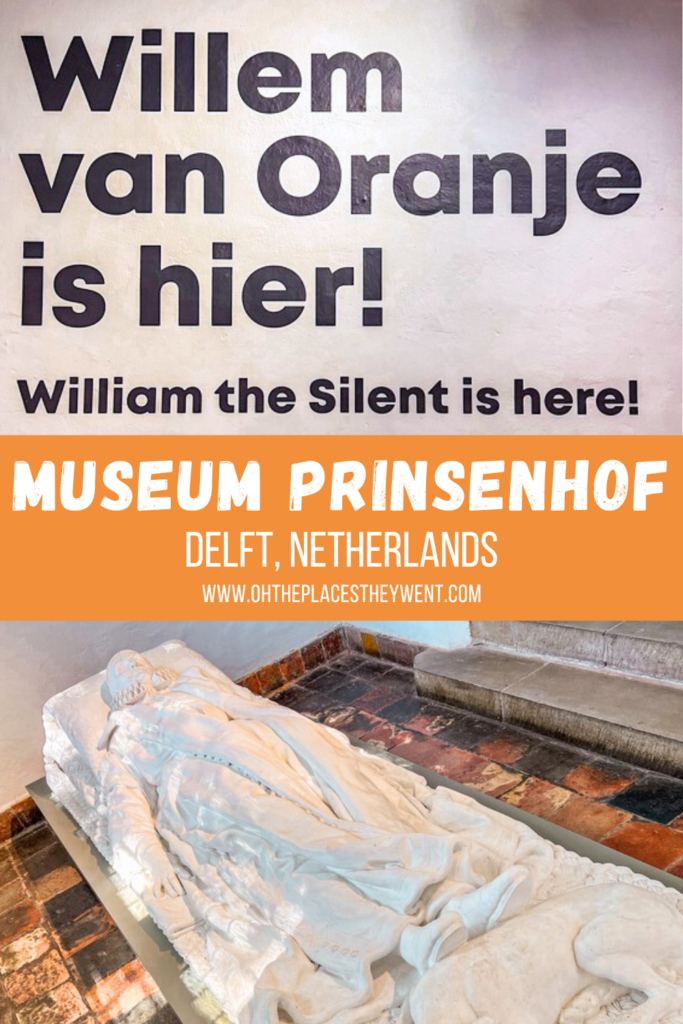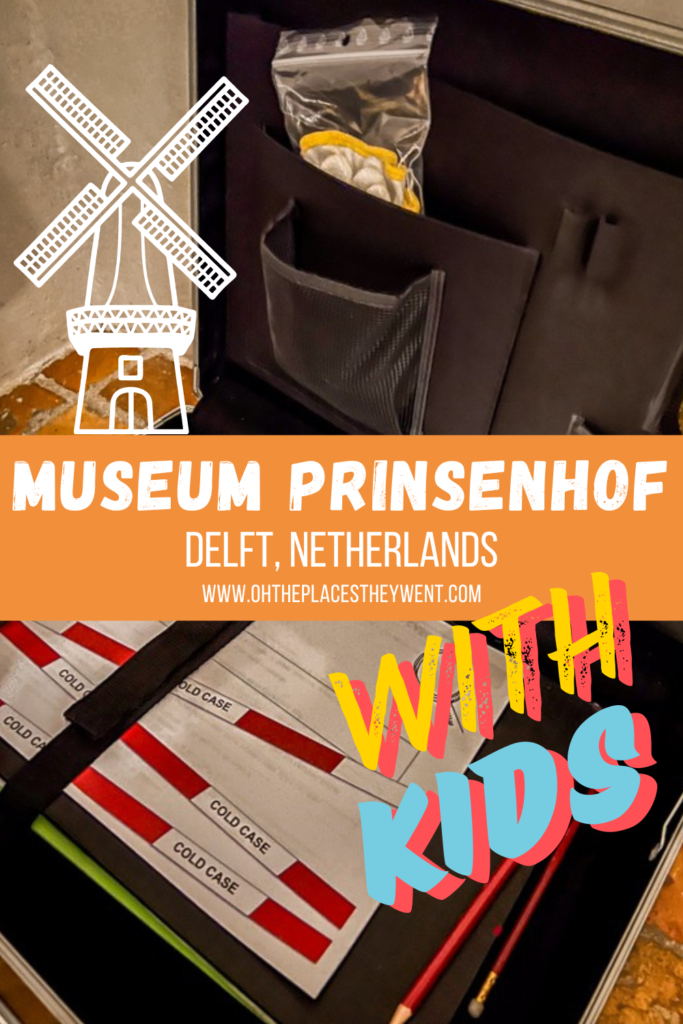Why Museum Prinsenhof Delft Is Fantastic For Kids
Our daughter has been really into following clues and deducing information the past couple of years. Of course, I’ve raised her on the fun of scavenger hunts, so that’s not surprising. So, when I asked what options for children activities Museum Prinsenhof Delft had available and the staff pulled out a detective kit as one of them, we had to go for it.
Following the clues to find out who murdered William of Orange and how? Monk is one of our favorite television shows so we were up for the challenge of this very very old cold case. If you’re looking for something fun to do with kids in the Netherlands, plan a day trip to Delft and definitely get in on the detective act.

Planning a trip to Museum Prinsenhof Delft with kids? Here’s what to know:
- Basic Info
- What To Know About Museum Prinsenhof Delft
- Activities Geared Towards Kids
- William Of Orange: A Cold Case
- Delft Masters Collection
- Pioneering Ceramics & Delftware
(This post contains affiliate links, which means I receive a certain percentage of a sale if you purchase after clicking at no cost to you. Thank you for your support.)
Basic Info
- Address: Sint Agathaplein 1, Delft, Netherlands
- Hours: Tuesday – Sunday: 11:00am ~ 5:00pm
- Admission: Adults: €14, Teenagers 13-18: €4; Children 7-12: €4: Children 3 and under are Free
- Free with Museumkaart, Rembrandt Card, Delft Pass, Rotterdam Pass, and ICOMcard
- Buy Tickets Online: You can get tickets in advance on Get Your Guide.

What To Know About Museum Prinsenhof Delft
The Museum Prinsenhof Delft tells the story of five centuries of Dutch history and Delft’s role in that history. If you plan to visit Delft, Netherlands, you’ll want to go to the museum first thing so that you can understand everything you see around town.
The museum showcases information under three important themes: William the Silent, Prince of Orange, Delft Masters and Delftware. If you don’t have time to go the Royal Delft Museum, Museum Prinsenhof Delft does a great job providing enough of an overview and history before you’re on your way.
Museum Prinsenhof Delft is housed in a former monastery which also served as William the Silent’s court in the 16th century. It was also where he was assassinated. The museum is among the 100 most important monuments in all of Netherlands.

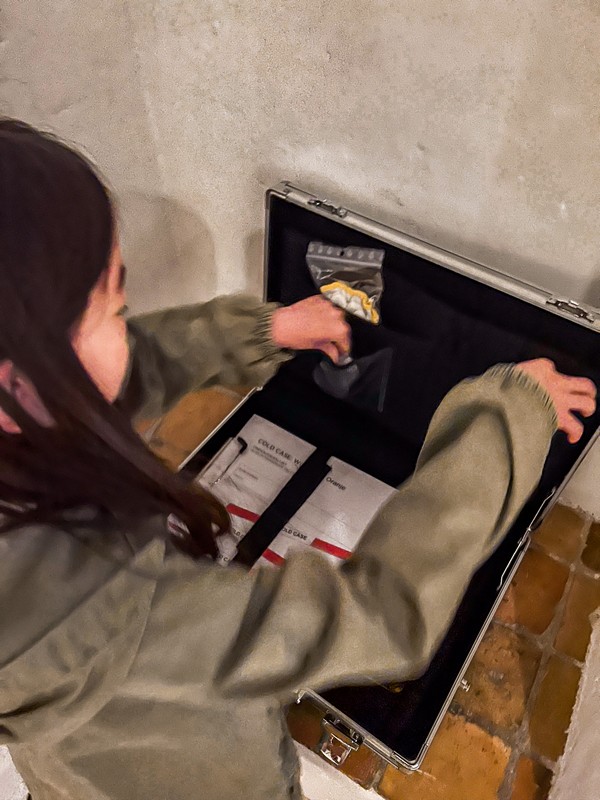
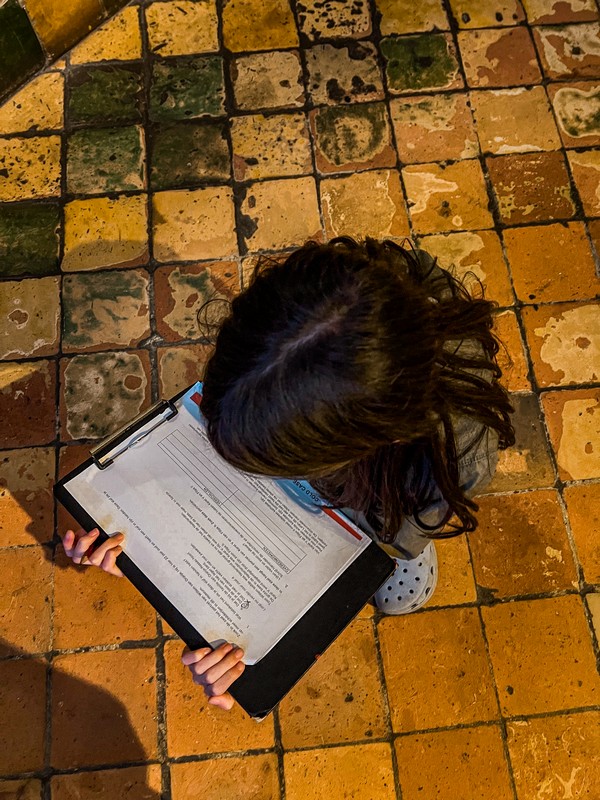
Activities Geared Towards Kids
Before you enter the museum, be sure to go into the gift shop where you can ask at the desk for one of the child-oriented activities. Museums in the Netherlands have fantastic kids activities, you just need to ask for them!
- Museum Bingo: If your child is quite young or doesn’t read/speak Dutch, go for the bingo option. You need to work your way through the museum, finding the various images and symbols and you can make bingo.
- Knowledge Quiz: Great for a the whole family, borrow a booklet filled with multiple choice questions and answers trying to see if you know what you’re looking at.
- Solve The Murder of William Of Orange: What we opted for was the whole suitcase of fun. Your child can pretend they are a detective, use the images and documents, magnifying glass, tape measure, gloves, and bullets in the case to deduce what happened.
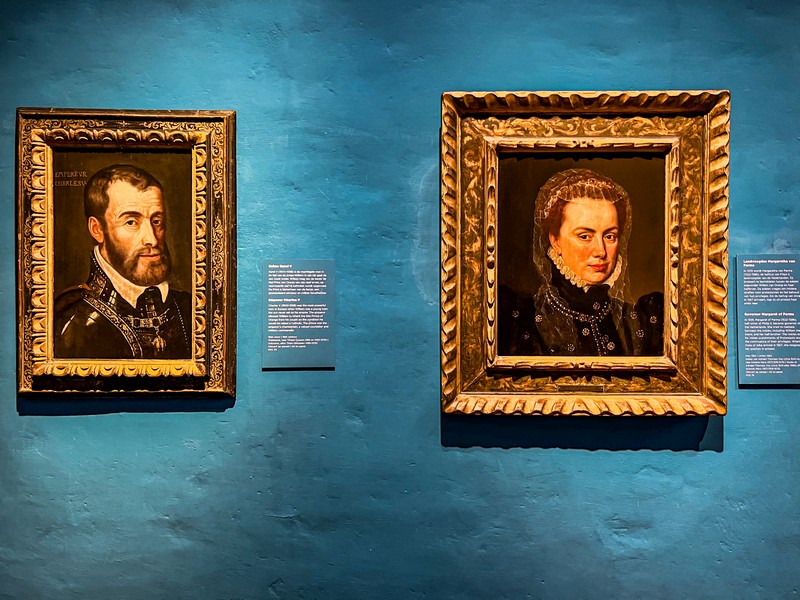
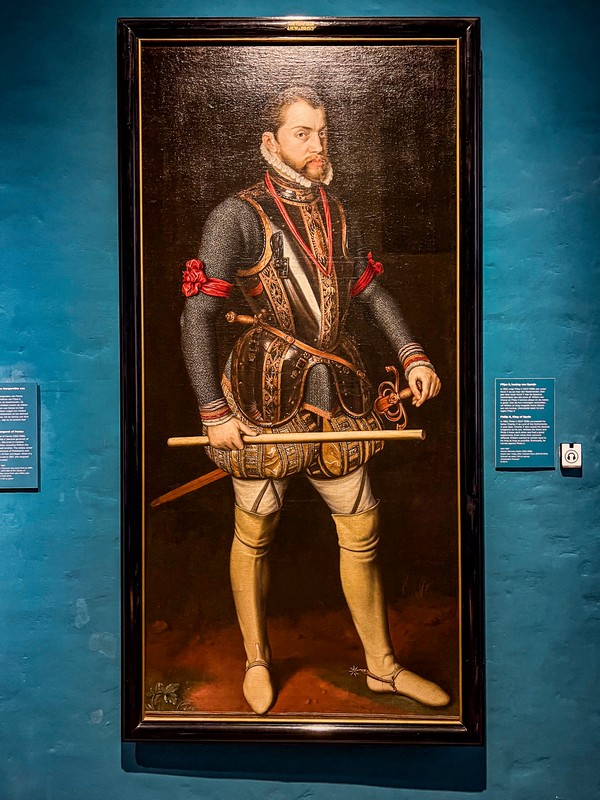
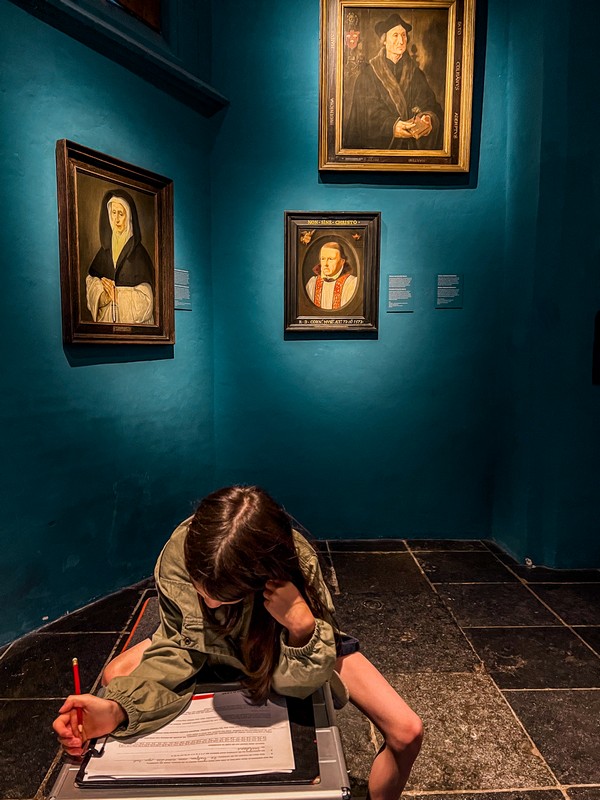
William Of Orange: A Cold Case
On July 10, 1584, William the Silent was shot dead here at Prinsenhof. The first rooms of the museum introduce him and what his arrival to Delft meant and how he ultimately established the foundation of the Netherlands.
Continue on and you and your children can discover the exact spot that William the Silent was shot. There are still bullet holes in the wall. Of course, you will be able to learn all about his part in history at the museum without the detective case, but with it, your child will be all the more enthralled in how history played out.
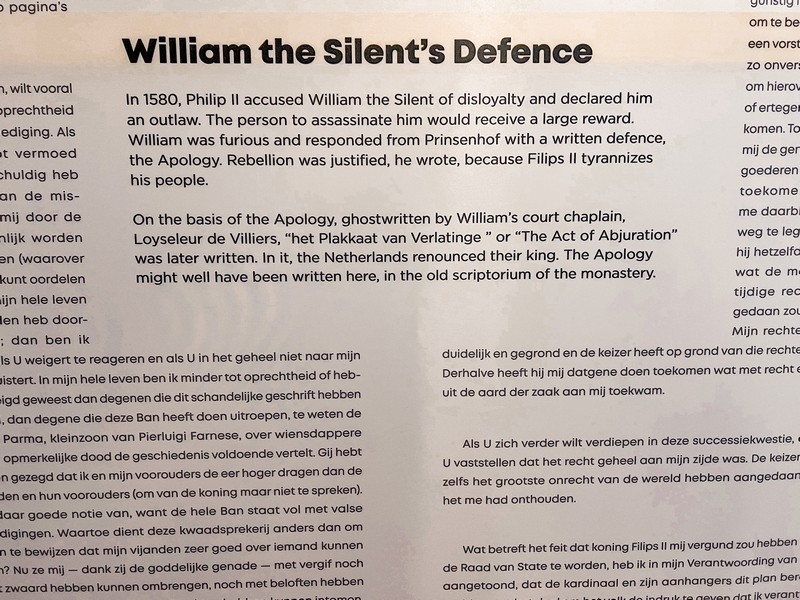
William the Silent (1533 – 1584) was the leader of the armed resistance to the Spanish king Philip II when he found shelter at Delft in 1572. The prince was fleeing the Spanish, and the walled city was a safe place from which he could lead the Revolt.
The monastery of Saint Agatha was the perfect base of operations. From that time on, the monastery was called the Prinsenhof. Yet, William the Silent was not safe here, either. On July 10, 1584, he was shot dead by the Spanish supporter Balthasar Gerards upon leaving the dining room.
“I cannot approve of monarchs who want to rule over the consciences of their subjects and deny them their freedom of faith and religion.”
Statement by William the Silent at the Council of State, New Year’s Eve 1564

The detective kit fosters a lot of conversation and fact finding. Understanding why the assassination took place is a big part of the beginning of the kit and it does a fantastic job of starting off the questions so that kids can understand the fight for religious freedom.
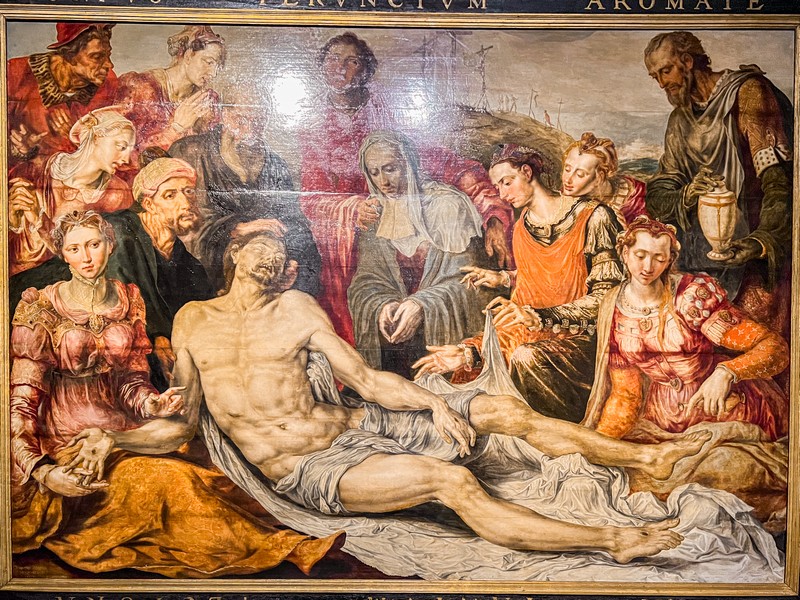
After finding the bullet holes, measuring the weapon and understanding the layout of the assassination on the steps, the case is completed and you can visit the rest of the museum at your leisure. It really was great fun not just for my daughter, but for me as well.

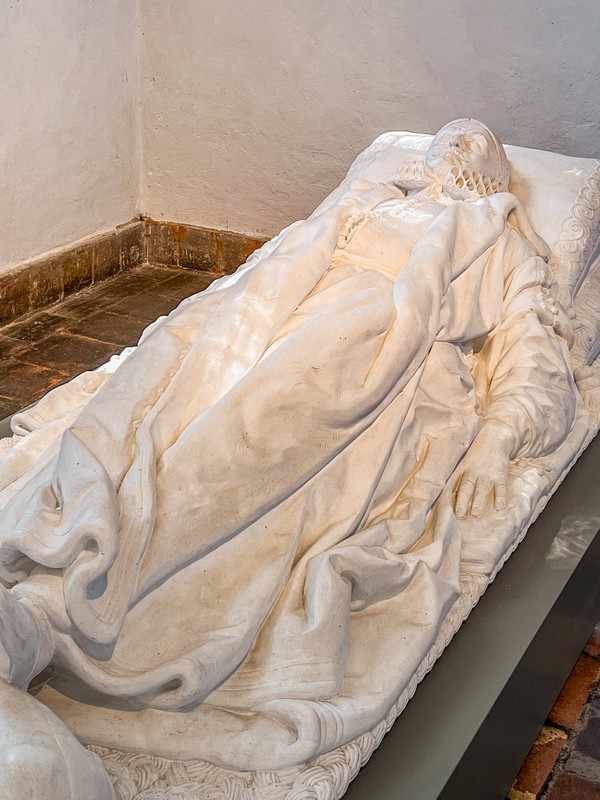

Delft Masters Collection
In the 1650s, art was thriving in Delft and the artists of the day were inspiring each other and thus creating works that were inspiring others worldwide. In the next part of the museum, you can learn more about the artistic masters that made Delft their home.
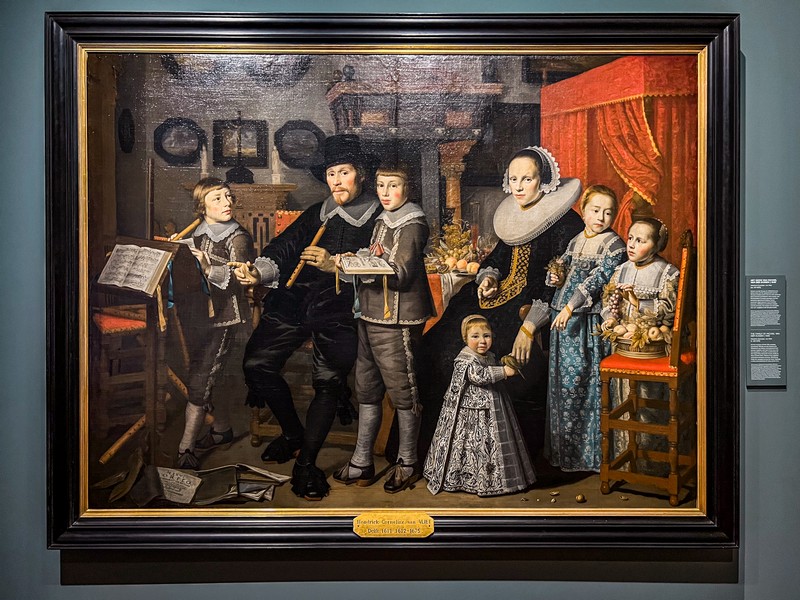
Antwerp tapestry weaver François Spiering, for example, established a studio in Delft, as did silversmith Nicolaes de Grebber from The Hague. At the same time, local portraitist Michiel van Mierevelt, set up a very successful studio. This marked the beginning of a period of artistic flourishing in Delft, which would last well into the 17th century.
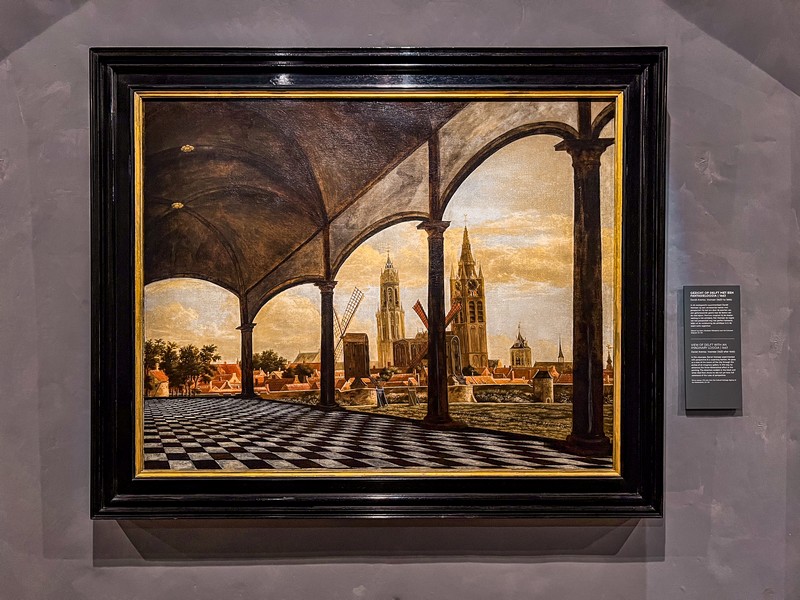
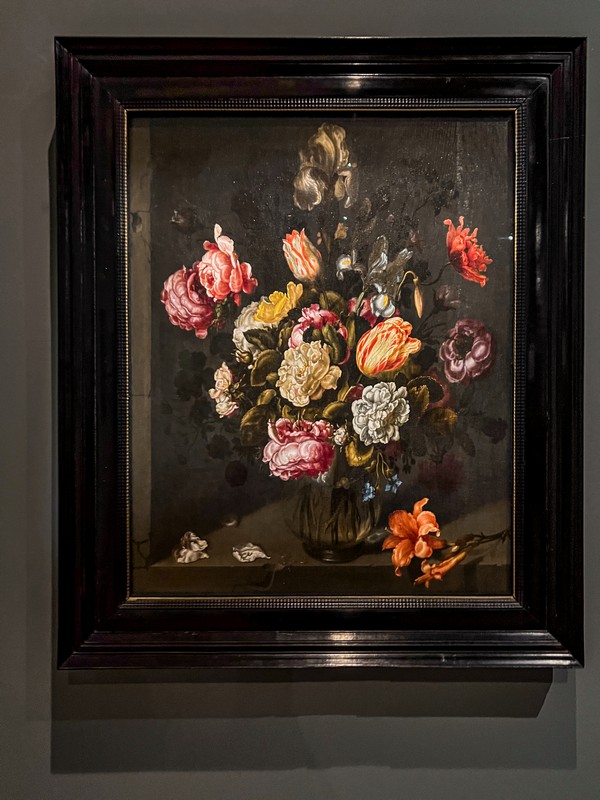
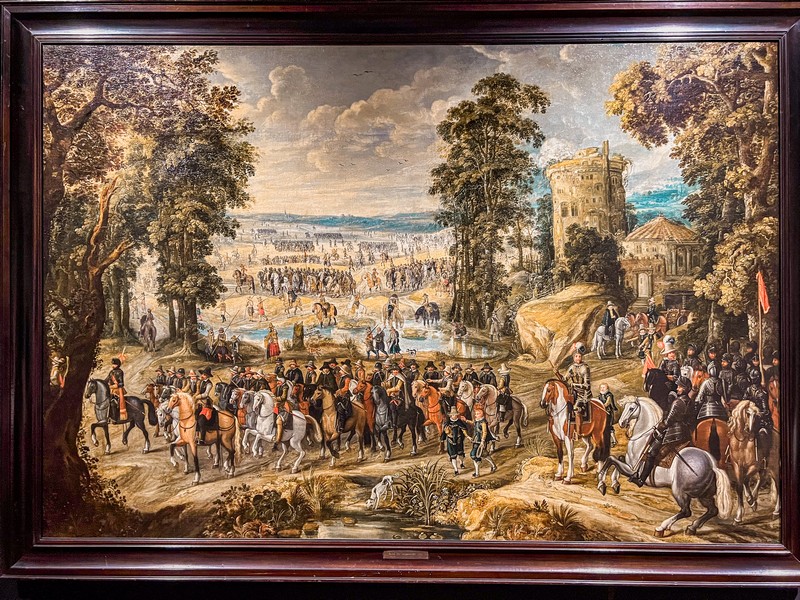

Pioneering Ceramics & Delftware
And then finally, a big part of the history of Delft that many tourists know about, is the iconic Delftware. Like I said, you could visit the nearby Royal Delft Museum to learn even more about that, but if you don’t have the time, there’s a beautiful introduction here.
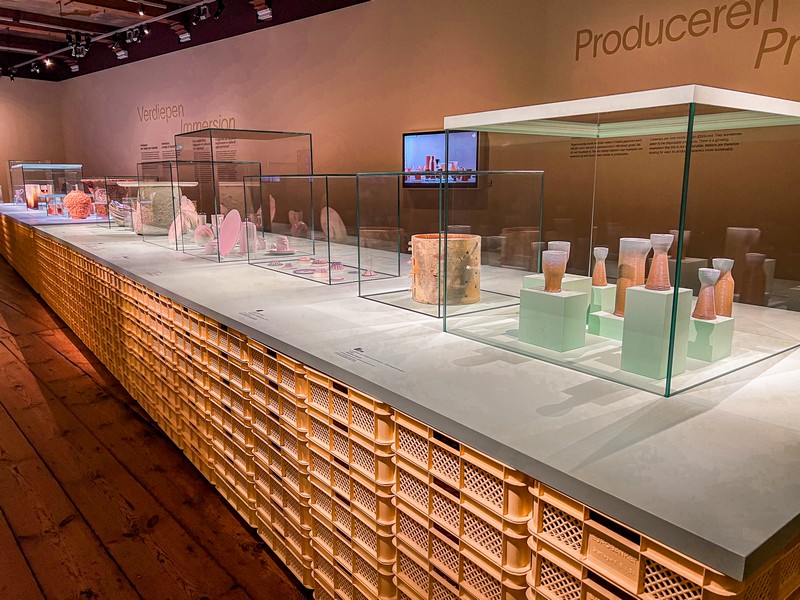
From the early 17th century, the Dutch East India Company shipped Chinese porcelain to the Netherlands. This strong, thin, white ceramic looked nothing like the breakable, thick, reddish-brown earthenware being made in the Netherlands. This Chinese porcelain became hugely popular.
Dutch potters tried to imitate the Chinese models however, there was no white porcelain clay in Dutch soil. By adapting their clay mixture and covering their objects completely in white tin glaze, the potters nevertheless managed to make a similar product. And like the makers of Chinese porcelain, they painted their objects in blue.
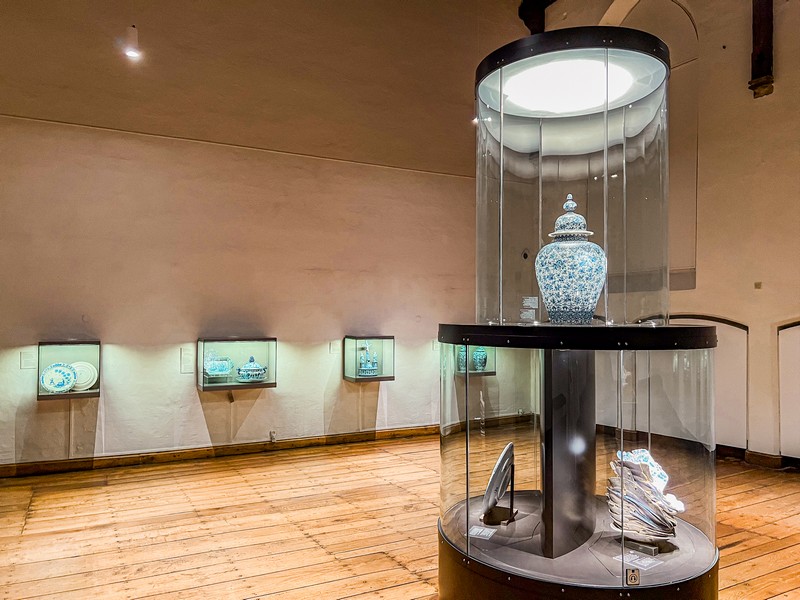
Around 1700, the Delft earthenware industry reached an artistic and technical peak. At that time, no fewer than 33 potteries were active in the city. In the late 17th century, Mary II, queen of England and wife of stadtholder William III, commissioned a range of showpieces at pottery De Grieksche A, lending royal allure to Delft earthenware.
If you’ve visited Porto, Portugal and seen the stunning blue-and-white tiled facades of the buildings, you might be interested to connect the dots a bit. Did you know that the Spanish artist Gabriel del Barco y Minusca introduced the blue and white tiles from Delft, Netherlands to Portugal and thus the walls became narrative scenes and spaces to tell a story?

From learning about the importance of William the Silent in Dutch history to the artists and artistic works to look for around the city of Delft and further, Museum Prinsenhof Delft does a fantastic job. It’s not only family-friendly, but has fantastic kid-friendly activities so everyone gets something out of a visit.
Did you like this post? Pin IT!
